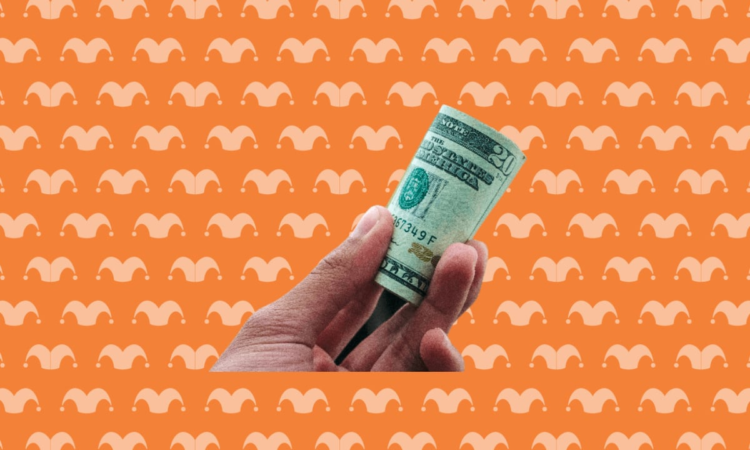
Before we start, let’s get one thing straight: There’s no single “best” investment out there. If you’re looking for ways to manage your money, you’ll likely want a mix of different vehicles, with the specifics depending on where you’re at in life. But if you want a magic bullet for your finances, I’m sorry to tell you it doesn’t exist.
When I think about my money, I find it helps to divide it into short-, medium-, and long-term goals. In the short-to-medium-term, the current high APYs on some certificates of deposit (CDs) could be right for some situations. Perhaps you’re saving for a vacation or a down payment on a house. If you’re comfortable leaving that money alone for the term of the CD to lock in a high interest rate, fantastic.
But other investments will work better for other scenarios — even with today’s best CD rates of 5% or more. Here are three to consider.
1. Better investment for the long term: S&P 500 ETF
There is a big difference between saving and investing. Saving tends to be low risk, but also generates relatively low returns. Putting money in savings accounts or CDs is important for any cash you might need in the next couple of years. But what about cash you don’t plan to touch for five years or more?
Our Picks for the Best High-Yield Savings Accounts of 2024
|
Capital One 360 Performance Savings 
APY 4.25%
|
APY 4.25%
|
Min. to earn $0 |
|
American Express® High Yield Savings 
APY 4.25%
|
APY 4.25%
|
Min. to earn $1 |
|
Citizens Access® Savings 
|
Min. to earn $0.01 |
That’s where investing comes in. This involves buying assets such as stocks, ETFs, bonds, or property that you think will accumulate value over time. It carries more risk, because markets can rise or fall and the returns are not predictable. However, historically, stock market investments generate higher returns than savings.
Take, for example, the S&P 500. This follows the performance of the largest companies in the U.S. and is often used as a benchmark for stock market performance. The index has delivered compound average annual growth of over 10% over the past 30 years. You don’t need to research individual stocks to invest. Instead, you could use an index fund or ETF that tracks the S&P 500 to get exposure to a mix of companies and industries.
Even better? You can use tax-advantaged accounts such as 401(k)s and IRAs to invest in the stock market. These can either help you reduce your tax bill today or make tax-free withdrawals in your retirement.
2. Better investment if you don’t have an emergency fund: High-yield savings account
Emergency funds are the bread and butter of almost any financial plan. If you’re able to put three to six months’ worth of living expenses to one side, that cash can tide you over if you lose your job or face an unexpected expense.
Easy access is crucial when it comes to emergency savings. If your money is tied up in a CD with a one-year term, you’ll usually have to pay an early withdrawal fee if you want to get at your money in a hurry. If it’s invested and the stock market is going through a bad patch, you might have to sell your investments at a loss.
That’s where a top high-yield savings account comes in. Unlike a CD, you don’t have to commit to leaving your money untouched for a set period. You can still earn high APYs. But, importantly, you’ll be able to access your money if and when you need it.
3. Better investment if you carry credit card debt: Paying it off
If I told you about an investment opportunity that paid a guaranteed APY of 20% or more, you’d probably think it was a con. You’d be right to be suspicious — investments that guarantee sky-high returns are often too good to be true.
But the Federal Reserve puts the average credit card APR at 22.63%. If you’re paying interest rates of 20% or more on a credit card balance, that’s eating into any profits you’re generating by saving or investing.
Let’s say you have $5,000 to invest and are also carrying a credit card balance of that amount. By paying down the credit card first, you could end up over $1,000 richer.
Scenario 1: You invest the money in an ETF that tracks the S&P 500 and pay down your debt gradually.
- If you paid down your credit card at $150 a month, it would take you just over four years to pay the balance. The interest costs would come to over $2,350.
- You might hope for an average return of 8% from the S&P 500. After four years, your investment might be worth around $6,800.
Scenario 2: You pay off your credit card balance and invest the money you would have spent on interest payments.
- If we take the same potential 8% average return from the S&P 500, a $150 monthly investment would quickly add up. You’d have over $8,000 in your investment account after four years.
Key takeaway
Before you lock your money up in a CD, think about what that cash is for and when you might need to access it. CDs can be an excellent short- to medium-term savings tool, but the stock market will probably generate better returns in the long term. In the short term, if you carry a credit card balance or don’t have an emergency fund, think about prioritizing them before you open a CD.
These savings accounts are FDIC insured and could earn you 11x your bank
Many people are missing out on guaranteed returns as their money languishes in a big bank savings account earning next to no interest. Our picks of the best online savings accounts could earn you 11x the national average savings account rate. Click here to uncover the best-in-class accounts that landed a spot on our short list of the best savings accounts for 2024.




